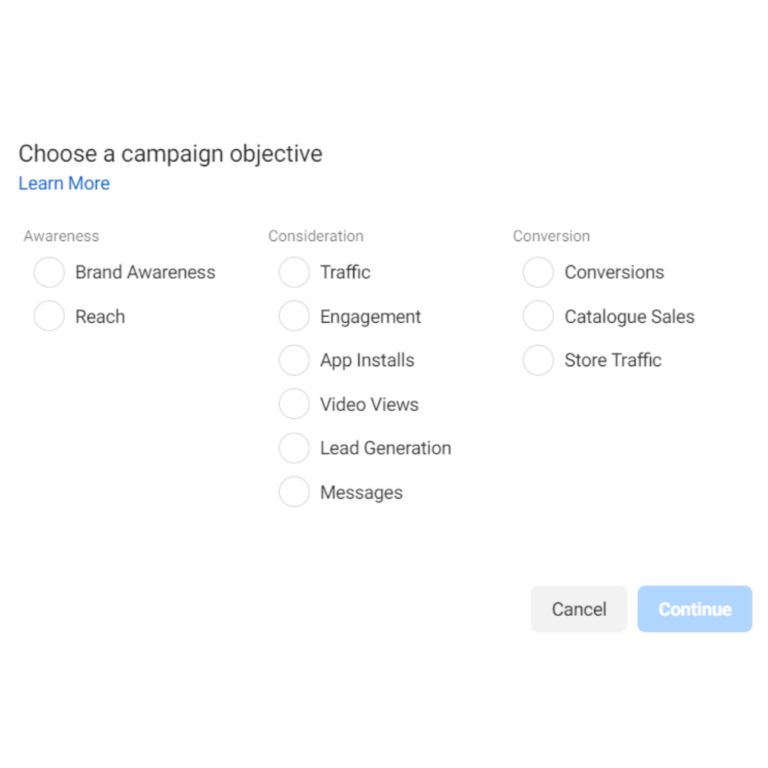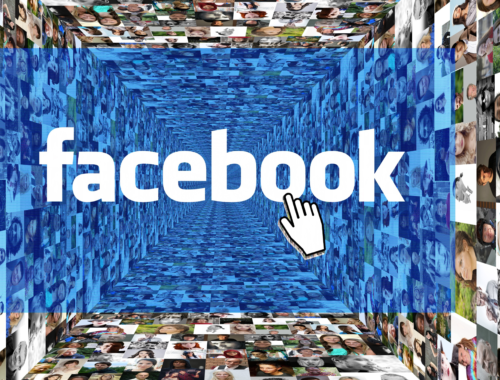Facebook Ads For B2B Marketing

Facebook ads for B2B marketing can be tricky but isn’t impossible and can be very successful with the right targeting in place. In the below I go over some of the ways you can setup your ads to benefit your B2B campaigns.

Facebook Ads Targeting and Adgroup Segmentation
Split Adsets Out By Industry
You likely already have an idea of the key industries that you want to be targeting. That’s great! Now it’s time to dedicate an adset to each industry. Doing this is a great way to not only optimise your budget share, it also allows you to gauge an idea on what industry performs well within Facebook Ads. You can also cater your ads easier based on the industry you are targeting for more personalised adcopy.
Target Decision Makers & Influencers
Alongside targeting your ideal industries, an effective targeting method is to narrow in on your audience by targeting decision makers of said industries. As well as those who will help influence the decision to use your products.
Let’s say you are looking to setup a campaign targeting those in the finance industry. A great targeting combination would be to target those who work within finance in the detailed targeting and then target the below decision makers within the “must also match” targeting.
Decision Makers:
- Director
- CEOs
- Business Owners
- Manager
- Founder
- Founder & CEO
Business Page admins are also a potential option when trying to target on a B2B basis. This is because in many instances (especially with small businesses) business page admins are likely to have a higher role in a company and may be a contributing factor in whether or not they choose your services.

Remember Your Conversion Window
Touch Points In The Path To Purchase
As touched on above, there are typically multiple touch points when targeting b2b. These touch points will act as trust signals and will likely be reviewed both by those who are decision makers and decision influencers. Therefore everything that could be reviewed outside of your Facebook Ads will need to be in tip top shape to build trust between yourself and potential enquiries.
Trust Signals For Decision Makers/Influencers:
- Reviews/Testimonials
- Case Studies
- Social Media Pages
- Google My Business
- Landing Pages- Ensure these are optimised for PPC
- Website
Have An OUTSTANDING USP Which Separates You From Your Competitors
It’s a big decision for a business to trust another business. So making this decision easier will set you apart from your competitors. Analysing what it is your competitors offer and implementing/advertising an element of your service that is unique, will automatically make your business more appealing. I.e. offering a free trial or guarantee to lower the risk on the user’s end.
Personalise Your Remarketing
Due to the long conversion window, remarketing will be a key element to include in your strategy plan. However, you can’t just remarket to previous website visitors and call it a day. You need to be targeting different audiences and personalising your ads based on the audience. A user who visited your site 30 days ago will likely need less convincing than a user who was on your site 90 days ago. This means the larger your list in terms of how long it’s been since they were last on your site, the more eye-catching and appealing your adcopy needs to be to recapture these users.
PPC Landing Pages
Testing landing pages that are PPC friendly can not only improve the user’s landing page experience but can also make the conversion process easier. It’s important to remember that there are certain aspects you will have implemented within your regular site pages that may not be necessary for PPC, vise versa.
Have a read of my previous post to learn more about how to create PPC friendly landing pages!
Ensure You Are Tracking Your Successes & Failures
Adding the Facebook Pixel to your site will allow you to see in more detail the performance of your campaigns, utilise remarketing and lookalike audience targeting, as well as where you should be pushing your ad spend. The Facebook pixel can not only track users on your site, but also those who carry out various event completions, such as phone calls, form submissions or purchases.
Another amazing tracking tool is Google Analytics! Google Analytics is a great way for you to gain in-depth analysis into the bounce rate of your pages, the drop off rate and new vs returning visitors. In addition to this, you are able to gain insight into attribution data (the touch points users make in the path to purchase). Understanding attribution is an essential part in analysing exactly what advertising mediums are benefiting your business. As well as what mediums play a regular role in the path to purchase when they are not delivering direct conversions.
Test Lead Facebook Ads Lead Gen Campaigns
Lead generation campaigns can be great to test in the instance you are looking to take users down a specific funnel. I.e. offering users a free ebook with the intention of capturing contact information to follow-up at a later date.
Since these campaign types allow the user to fill out lead forms upon seeing the ad, without needing to exit the platform, it makes the conversion process fast and efficient. However in terms of negatives regarding this, although these campaign types can generate a large volume of results, these results can be of a lower quality. As you are also cutting out the research process when using these campaign types, they typically only get a positive response when you are offering something that has minimal risk to the user. This includes products such as a free Ebook, a free consultation call, a free audit etc.
Test Campaign Objectives: Traffic vs Conversions
Although tedious, testing is necessary. It’s the best way to find out how you can build your campaigns, what to avoid and how to improve performance. There are many different campaign objectives you can test depending on the method in which you would like to acquire a new prospect. However if you plan on having your prospects make an enquiry via your website, then two objectives you can split test initially are traffic and conversions.
Traffic Objective: Send people to a destination, such as a website, app, Facebook event or Messenger conversation.
Conversion Objective: Show your ads to people who are most likely to take valuable actions, such as making a purchase or adding payment info, on your website, app or in Messenger.
From reading this you may be thinking. “If my goal is to get conversions, why would I not go ahead with a conversion objective?”
The reason why I would not rely on a conversion objective as the only option when trying to build a cost effective campaign is because for this objective type you are charged per impression. This means you run a high risk of wasting spend if your campaigns are not highly targeted and capturing those with a high intent. Click the following link to learn more about high intent targeting and potential Facebook Ads mistakes you could be making!
When running a campaign with a traffic objective you are able to opt for being charged per click. Meaning you will not pay until a user has taken an active interest in your ad and wants to learn more about your business.
Testing the two side by side is a great opportunity to test a campaign type where you are paying only for those with higher intent vs a campaign where Facebook is optimising towards your goal.

Optimise, Optimise, Optimise!
This is something I frequently mention, but that’s only due to the importance it carries! Optimisation is what will take your campaign’s performance to the next level. Avoiding this will only allow your ads to get so far, great things take time and work, Facebook Ads is no exception to this rule.
Good luck with your new Facebook Ads Campaigns and remember if they don’t deliver the first time round, review what was implemented and try again with a new approach!



One Comment
Pingback: